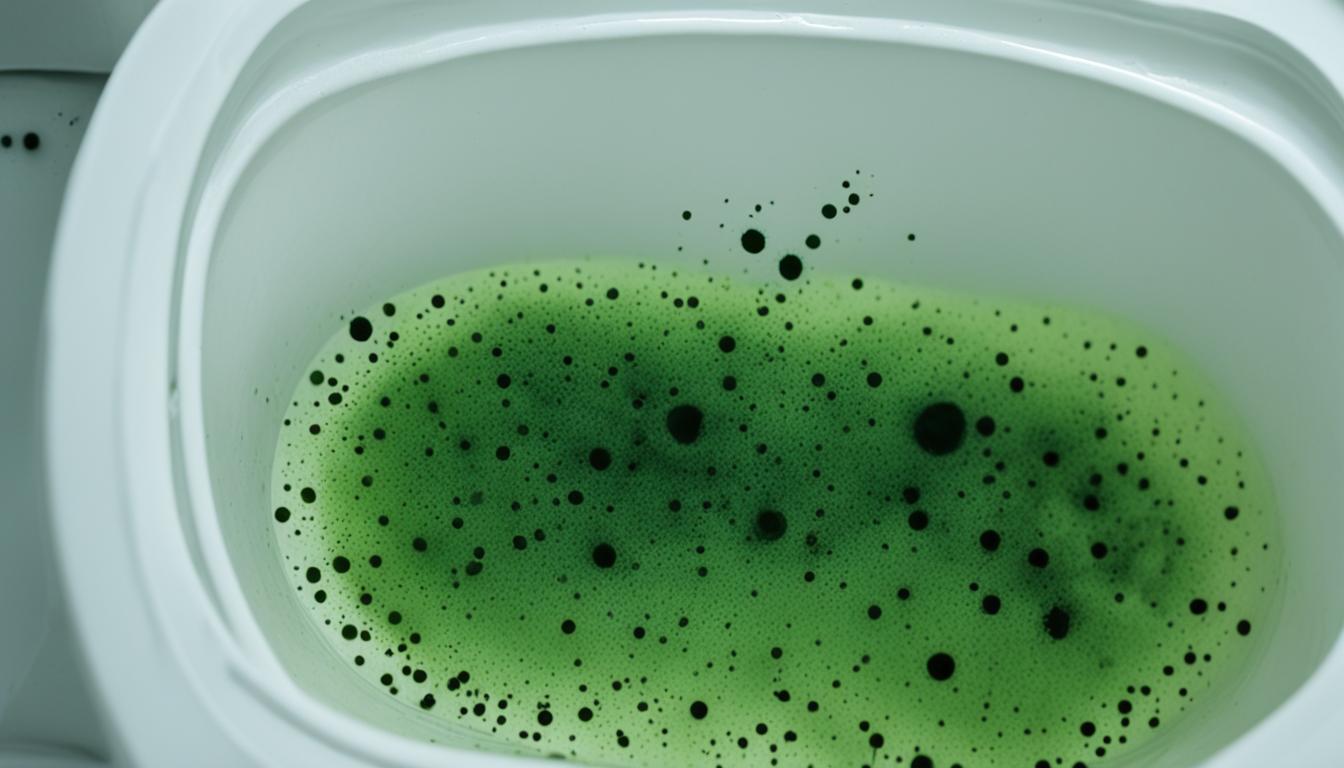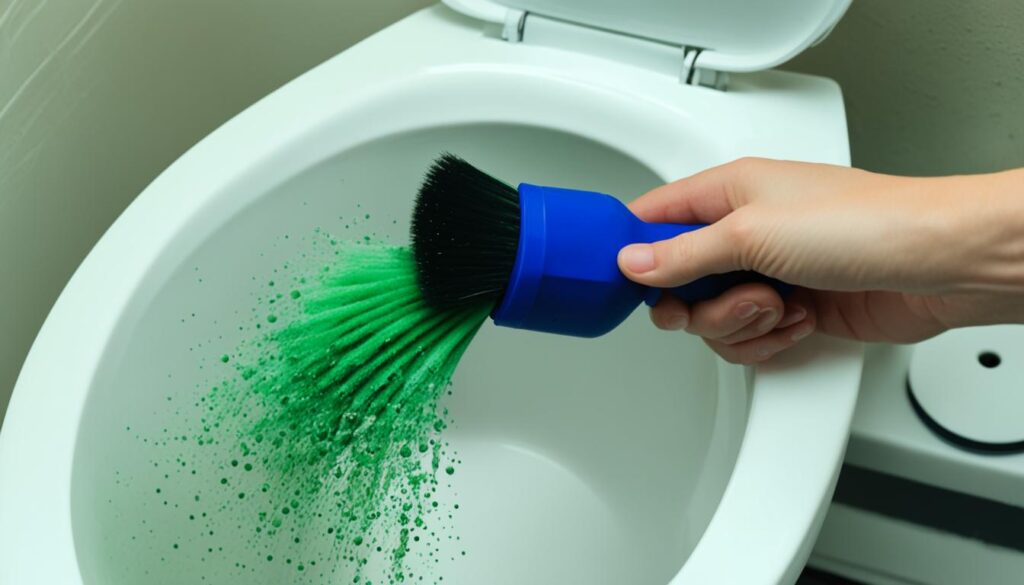
Unlocking the Mystery of Mold in toilet tank: What You Need to Know
The presence of mold in your toilet tank can be a source of concern and frustration. Not only does it create an unsightly appearance, but it can also pose risks to your health. Understanding the causes of mold growth and taking preventive measures are essential for maintaining a cleaner and healthier bathroom environment.
Key Takeaways:
- Mold in toilet tanks can present health risks and compromise the cleanliness of your bathroom.
- Excessive moisture, poor ventilation, water leaks, condensation, and the presence of organic matter are common causes of mold growth in toilet tanks.
- To prevent mold in your toilet tank, it is vital to clean regularly, improve ventilation, fix water leaks, and reduce moisture levels.
- Using mold-resistant products can help inhibit the growth of mold in your toilet tank.
- Seeking professional mold remediation services, like those offered by Fix Mold Miami, can effectively address severe mold infestations.
For a comprehensive assessment of mold in your toilet tank and expert advice on prevention, contact Fix Mold Miami at 305-465-6653. Our skilled team specializes in mold assessments, prevention, and remediation, ensuring a safer and cleaner bathroom environment for you and your family.
Understanding the Causes of Mold in Toilet Tank
Mold growth in toilet tanks can be a common issue in many households. To effectively address and prevent this problem, it is important to understand the factors that contribute to mold development. The following are key causes of mold in toilet tanks:
Excessive Moisture
Excessive moisture is a major catalyst for mold growth. When there is a high level of moisture in the toilet tank, it creates an environment where mold can thrive. This can occur due to a variety of reasons, such as a leaking toilet or a humid bathroom.
Poor Ventilation
Inadequate ventilation in the bathroom can exacerbate mold growth in the toilet tank. Without proper airflow, moisture becomes trapped and provides a favorable environment for mold spores to settle and multiply.
Water Leaks
Water leaks in the toilet tank can introduce additional moisture, leading to mold formation. Common sources of water leaks include cracked tank components, loose connections, or faulty flappers. Regularly inspecting and promptly fixing any leaks is essential to prevent mold growth.
Condensation
Condensation occurs when warm, moist air comes into contact with a cooler surface. In the case of a toilet tank, condensation can form on the exterior or interior walls. This moisture buildup can provide an ideal breeding ground for mold.
Presence of Organic Matter
Organic matter, such as mineral deposits or residue from cleaning agents, can accumulate in the toilet tank. When combined with moisture, it creates an environment conducive to mold growth. Regular cleaning and maintenance help remove any organic matter and prevent mold formation.
Toilet Tank Maintenance
Regular maintenance of the toilet tank is crucial in preventing mold growth. This includes cleaning the tank periodically, checking for leaks, and ensuring proper ventilation in the bathroom. By implementing these maintenance practices, you can significantly reduce the risk of mold development in the toilet tank.
“Excessive moisture, poor ventilation, water leaks, condensation, and the presence of organic matter can create an ideal environment for mold growth in toilet tanks.” – Mold Prevention Experts
In the next section, we will explore practical solutions and prevention methods to effectively address mold growth in toilet tanks.
Addressing Mold Growth in Toilet Tanks: Solutions and Prevention
In order to combat and prevent mold growth in toilet tanks, it is crucial to implement practical solutions and prevention methods. By taking proactive steps, you can ensure a cleaner and healthier bathroom environment. Here are some effective strategies to address mold growth:
1. Cleaning the Toilet Tank
Regular cleaning is essential to remove existing mold and prevent its reemergence. Follow these step-by-step instructions to effectively clean your toilet tank:
- Turn off the water supply to the toilet and flush it to drain the tank.
- Add a cleaning solution specifically designed for mold removal to the tank.
- Use a toilet brush or scrub brush to scrub the inside of the tank, paying attention to areas prone to mold growth.
- Rinse the tank thoroughly with clean water.
- Turn on the water supply and flush the toilet a few times to ensure all cleaning solution is flushed out.
Regular cleaning should be performed to maintain a mold-free toilet tank.
2. Using Mold-Resistant Products
Using mold-resistant products can help prevent the growth of mold in toilet tanks. Look for toilet tanks that are specifically designed to resist mold and mildew. These products are often treated with antimicrobial agents that inhibit mold growth.
3. Improving Ventilation
Poor ventilation can contribute to moisture buildup in the bathroom, creating an ideal environment for mold growth. Ensure that your bathroom is properly ventilated by installing an exhaust fan. This will help remove excess moisture and prevent condensation.
4. Fixing Water Leaks
Water leaks provide a constant source of moisture that can promote mold growth. Check for any leaks in and around the toilet tank, and promptly repair them to prevent further mold development.
5. Reducing Moisture
Reducing moisture levels in the bathroom can greatly discourage mold growth. Consider using a dehumidifier to remove excess moisture from the air. Additionally, wiping down surfaces regularly and keeping the bathroom well-ventilated can help prevent moisture buildup.
6. Seeking Professional Mold Remediation
In severe cases of mold growth or if the above methods don’t effectively address the issue, it is advisable to seek professional mold remediation services. Professional mold remediation experts have the knowledge and equipment to safely remove mold and prevent its recurrence.
By employing these solutions and prevention methods, you can effectively combat mold growth in toilet tanks and maintain a clean and healthy bathroom environment.

| Methods | Effectiveness |
|---|---|
| Regular cleaning | Highly effective in removing existing mold |
| Using mold-resistant products | Significantly reduces mold growth |
| Improving ventilation | Minimizes moisture and prevents condensation |
| Fixing water leaks | Eliminates a source of moisture |
| Reducing moisture | Discourages mold growth |
| Professional mold remediation | Provides comprehensive mold removal |
Conclusion
Addressing and preventing mold in toilet tanks is crucial for maintaining a cleaner and healthier bathroom environment. Throughout this article, we have explored the causes of mold growth in toilet tanks, including excessive moisture, poor ventilation, water leaks, condensation, and the presence of organic matter. We have also provided practical solutions and prevention methods, such as regular cleaning, using mold-resistant products, improving ventilation, fixing water leaks, and reducing moisture.
However, it is important to remember that certain mold situations may require professional intervention. This is where Fix Mold Miami comes in. As Florida’s highest-rated service for mold assessments, prevention, and remediation, they have the expertise and experience to handle any mold-related issues effectively. If you suspect mold in your toilet tank or need a comprehensive assessment, don’t hesitate to contact Fix Mold Miami at 305-465-6653.
Ultimately, the key to avoiding mold growth in toilet tanks is regular maintenance and vigilance. By following the recommended prevention methods and promptly addressing any signs of mold, you can ensure a healthier and more hygienic bathroom environment for you and your family. Remember, preventing mold is always better than dealing with the consequences of its growth.




